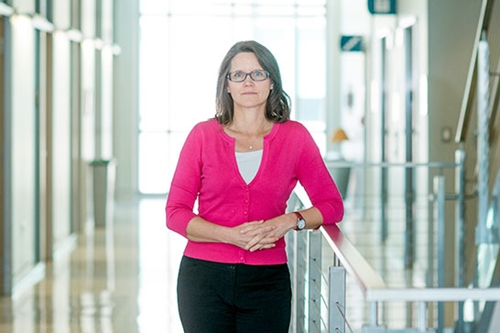15 July 2015. Medical University of South Carolina and pharmaceutical company Bristol-Myers Squibb are collaborating on drug discovery research to better understand the science behind fibrosis diseases, leading to new treatments. Financial and intellectual property aspects of the partnership were not disclosed.
Fibrosis is the growth of excess tissue that occurs in response to injury or damage, and is often referred to as scarring. The excess tissue growth, however, can happen internally as well with damaging effects on organs in disorders such as scleroderma, kidney fibrosis, and idiopathic pulmonary fibrosis.
Scleroderma results in hardening of skin and connective tissue, but can also affect blood vessels and the digestive tract. Diabetic kidney disease is tissue damage from fibrosis in kidneys of people with diabetes, considered a major health problem. Pulmonary fibrosis is scarring of lung tissue that prevents the lungs from operating properly, restricting oxygen flow to the blood, brain, and other organs. Idiopathic pulmonary fibrosis refers to conditions where the precise cause of the scarring is unknown.
The partnership is expected to investigate the mechanistic underpinnings of fibrosis, examine different disease characteristics expressed by individuals with fibrotic disorders, and improve the understanding of biomarkers and predictors of disease progression. Karen Lackey, director of the university’s drug discovery center, says in a joint statement, “We have unparalleled expertise in fibrosis research at MUSC,” adding that the collaboration has “the potential to make a significant impact in fibrotic diseases and in patients’ lives with these debilitating diseases.”
In 2014, Medical University of South Carolina or MUSC in Charleston established its Center for Therapeutic Discovery and Development that aims to develop a new model for improving the success rate for discovering new therapies. That model, says the university, relies on greater collaboration between clinicians and researchers, as well as academic and industrial scientists, to break down traditional silos. One of tools for breaking through the silos is a “virtual huddle,” an online space where colleagues can log and discuss ideas, and where ideas getting the most discussion rise to the top and become the basis for pitches to industry.
Fibrotic disorders is one the key research areas for Bristol-Myers Squibb. The company has biologic therapies in current or recently completed clinical trials for idiopathic pulmonary fibrosis and diabetic kidney disease. Bristol-Myers Squibb also gained access through acquisition of other therapy candidates for pulmonary fibrosis in early-stage trials.
In addition, the company has a collaboration and licensing agreement with California Institute for Biomedical Research for small molecule anti-fibrotic therapies. That deal, signed in January 2015, makes it possible for Bristol-Myers Squibb to develop and commercialize drug candidates currently in preclinical testing.
Read more:
- Allied-Bristol Licenses Chinese Root Extract Technology
- Report Evaluates Industry-Academic Biotech Partner Roles
- Alliance Building Platform Against Drug-Resistant Infections
- Sanford-Burnham, Lilly Partnering on Immune Therapies
- Biotech, Research Institute Partner on Gene Therapies
* * *


 RSS - Posts
RSS - Posts
You must be logged in to post a comment.